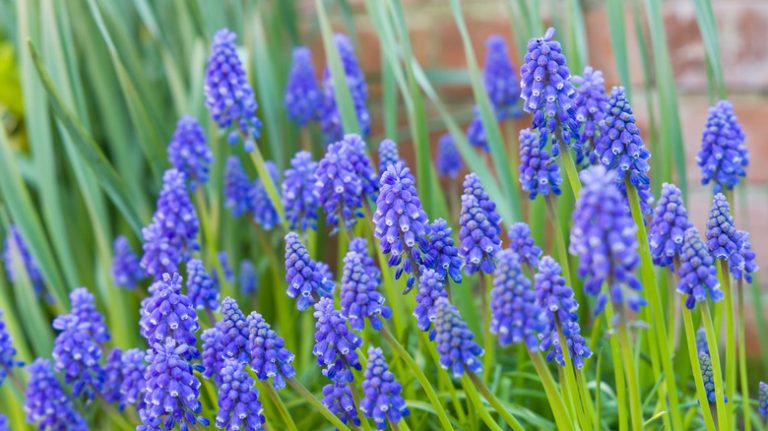Orchids are a group of plants that has always fascinated both botanists and flower enthusiasts. Their range of colors, shapes, and perfumes is truly wonderful, and they have been cultivated for centuries. While most people might associate orchids with fancy pots and blue ribbons at flower shows, they are much more than that. Orchids are a diverse and complex family of plants that originate from all over the world. In this article, we will be exploring some of the different orchid species and their unique characteristics.
One of the first orchid genera you might come across when exploring the orchid family tree is Phragmipedium. These orchids are native to the mountains of South America and are known for their large and colorful labellum, which is a modified petal that helps attract bees. Bletilla is another interesting genus that is relatively easy to care for. These orchids originate from China and have beautiful purple flowers.
Coelogyne is a genus that is widely available and popular among orchid enthusiasts. These orchids have a wide range of flower shapes and sizes, and some species have a wonderful perfume. Another interesting genus is Arundina, which includes the Brassia arundina and Retrocalla. These orchids have a unique shape and are often used by perfumers to create fragrances.
Nobilé orchids are known for their beautiful flowers and are commonly found in the wild. They are native to the mountains of Thailand and have a standard column that is characteristic of the genus. Odontoglossum is another genus that has a wide range of flower shapes and sizes. These orchids have been widely cultivated and have become more popular in recent years.
Ascocentrum and Pleione are two genera that are smaller and have smaller flowers. They are often used as indoor plants and are popular among orchid collectors. Pleurothallis is a larger genus that has a diverse range of flower colors and shapes. These orchids are native to South America and are known for their ability to grow in a variety of conditions.
Dendrophylax orchids are unique because they don’t require any soil. These orchids grow on trees or rocks and get their nutrients from the air or rainwater that collects in their leaves. One of the most famous orchids in this genus is Dendrophylax lindenii, also known as the ghost orchid. These orchids are very rare and can only be found in certain regions of Florida.
Phalaenopsis orchids are perhaps the most well-known and widely cultivated orchids. They are commonly referred to as moth orchids due to their flower shape. These orchids are a favorite among flower enthusiasts due to their long-lasting flowers and ability to bloom throughout the year. They are relatively easy to care for and can be grown indoors, making them a popular choice for beginners.
In conclusion, exploring the orchid family tree is like venturing into a whole new world. With over 11,000 species, there is a multitude of shapes, colors, and fragrances to discover. Whether you are a professional botanist or a casual plant lover, orchids offer endless possibilities for exploration and enjoyment. So next time you come across an orchid, take a moment to appreciate the incredible diversity and beauty that these plants have to offer.
Types of Orchids
Orchids are a diverse and beautiful group of flowering plants that belong to the orchid family, Orchidaceae. There are numerous types of orchids, each with its own unique characteristics and growing requirements. Here are some examples of the different types of orchids:
Moth Orchids (Phalaenopsis): These small-flowered orchids are commonly grown in pots and are once very popular. They are available in a wide range of colors and patterns.
Reedstem Orchids (Epidendrum): This group includes species such as the Epidendrum lindenii, which grows as a large-flowered orchid that shades of orange.
Bamboo Orchids (Arundina): Also known as walking orchids, these orchids have larger, sword-shaped leaves and long, thin stems. The Arundina graminifolia is a common example of this type.
Slipper Orchids (Phragmipedium): This type of orchid comes in a variety of shades and often has large, showy flowers. They are known for their unusual pouch-like shape and are sometimes compared to the petals of a lady’s slipper shoe.
Miltonia Orchids: These orchids, also known as pansy orchids, have large, flat flowers that come in a wide range of colors. They are often fragrant and are popular among beginners.
Chinese Ground Orchids (Bletilla): The Bletilla is a cool-growing orchid that thrives in winter and produces beautiful flowers in shades of pink, purple, and white.
Phaius Orchids: Commonly referred to as nun orchids, the Phaius orchids have large, broad leaves and flowers that come in shades of white, yellow, and purple.
Oncidium Orchids: These orchids are commonly known as “dancing ladies” because their flowers resemble women in long flowing dresses. They come in various colors, including yellow, orange, and red.
Cattleya Orchids: Cattleya is one of the most popular and widely recognized orchid genera. They have large, fragrant flowers that come in a variety of colors, including purple, pink, and white.
Vanilla Orchids (Vanilla): The Vanilla orchid is an important orchid known for its aromatic pods, which are used to produce vanilla flavoring. They are native to the Southeast Asia region.
Pleione Orchids: Pleione orchids have small, delicate flowers that come in shades of pink, purple, and white. They are often referred to as “windowsill orchids” because they are commonly grown in pots on windowsills.
Gongora Orchids: Gongora orchids have massive flowers with intricate patterns and often emit a strong fragrance. They are native to Central and South America.
Lycaste Orchids: Lycaste orchids are known for their large, waxy flowers that come in shades of white, pink, and yellow. They are native across parts of Central and South America.
Odontoglossum Orchids: Odontoglossum orchids owe their name to their tooth-like markings on their lip. They have medium to large-sized flowers in various colors and patterns.
Barkeria Orchids: Barkeria orchids are most commonly found in Mexico and parts of Central America. They produce flowers in shades of purple, pink, and white and often have a unique shape or patterning on their petals.
These are just a few examples of the many different types of orchids. Each orchid species has its own unique characteristics, and there is something for every orchid enthusiast to enjoy.
Moth Orchids
Moth orchids, also known as Phalaenopsis, are a popular and easy-to-grow variety of orchids. They belong to the family Orchidaceae, a diverse family consisting of more than 28,000 known species. Moth orchids are exceptional for their beautiful and often colorful flowers, which resemble moths in flight.
When mapping the orchid family tree, moth orchids can be found in various branches. They are closely related to other popular orchid varieties such as Catasetum, Miltoniopsis, Phragmipedium, Vanda, and many others. Moth orchids are typically small in size, just a few inches in height, making them a favorite among indoor gardeners.
In terms of lighting requirements, moth orchids prefer bright, indirect light. They can be grown near windows with filtered sunlight or under fluorescent lights. Moth orchids are epiphytes, which means they naturally cling to the branches of trees and thrive in humid environments.
Moth orchids are known for their long-lasting blooms. The flowers may last for several weeks or even months, giving them a prominent place in many households. The flowers come in a wide range of colors, including white, pink, purple, and yellow. Some moth orchids even have multiple colors on a single flower.
Other varieties of moth orchids include Pleione, Phaius, Phalaenopsis, Cycnoches, and Spathoglottis. These varieties have similar growing conditions and care requirements, making them suitable for both beginner and experienced orchid growers.
Moth orchids are native to tropical regions and are commonly found in countries such as the Philippines, Indonesia, and Malaysia. They are easy to propagate and can be grown from seeds or by dividing existing plants. Once established, moth orchids require little maintenance and can thrive in a variety of environments.
Moth orchids are popular among collectors, perfumers, and floral enthusiasts. Their beautiful and fragrant flowers make them a favorite choice for perfumes and floral arrangements. Additionally, moth orchids are often used in hybridization to create new and unique orchid varieties.
In conclusion, moth orchids are a diverse and beautiful group of orchids. They are easy to grow and care for, making them an excellent choice for both beginner and experienced gardeners. Whether you are looking for a small indoor plant or a show-stopping centerpiece, moth orchids are sure to impress with their exceptional beauty.
Dendrobium Orchids
Dendrobium Orchids are a diverse and popular group of orchids that belong to the Orchidaceae family. They are known for their long, slender stems and vibrant flowers. With over eight known types of Dendrobium Orchids, they come in a variety of shapes and colors.
- The Dendrobium lindenii, also known as the “Golden Lily Orchid,” is a favorite among orchid enthusiasts for its yellow flowers.
- The Dendrobium oncidium has flowers that resemble the Oncidium Orchid, with its somewhat branched shape.
- If you’re a fan of blue orchids, the Dendrobium cymbidium is the one for you. Its flowers have a wonderful blue hue.
- The Dendrobium brassia, somewhat resembling the Brassia Orchid, is another favorite among orchid lovers.
- If you want to explore a different type of Dendrobium Orchid, the Dendrobium disa is always an interesting choice. Sometimes referred to as the “Walking Orchid,” it has unique foliage.
- The Dendrobium spathoglottis is known for its beautiful and vibrant flowers, with its petals resembling the Spathoglottis Orchid.
- For those looking for an orchid that mimics the look of grass, the Dendrobium graminifolia is the one for you. Its slender leaves give it a grass-like appearance.
- The Dendrobium zygopetalum is a favorite among orchid enthusiasts for its exceptional flowering.
Growing Dendrobium Orchids can be a rewarding experience. Most Dendrobium Orchids are native to Southeast Asia, with some species found in the mountains. They appreciate average lighting, although some species prefer more sunlight. The temperature and humidity requirements for these orchids vary depending on the species and their natural habitat. It’s important to do your research and provide the right conditions for your specific type of Dendrobium Orchid.
Caring for Dendrobium Orchids is relatively easy. They are relatively low maintenance and resilient plants. They thrive in a greenhouse or indoor environment with good air circulation. Regular watering and fertilizing will help ensure their health and growth. Walking through the whole process of growing a Dendrobium Orchid, from mapping down the flowering to learning about the particular care they need, is an exciting journey.
In conclusion, Dendrobium Orchids are a diverse and beautiful group of orchids that offer a wide range of colors, shapes, and sizes. Whether you’re a beginner or an experienced orchid enthusiast, there is sure to be a Dendrobium Orchid that catches your eye. Their vibrant flowers and unique foliage make them a wonderful addition to any orchid collection.



